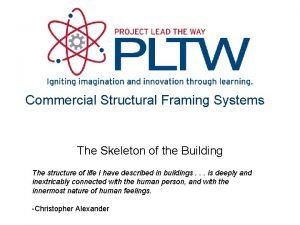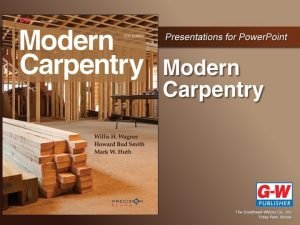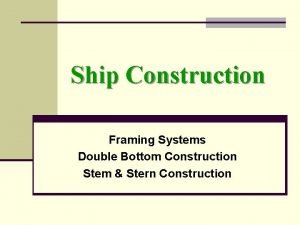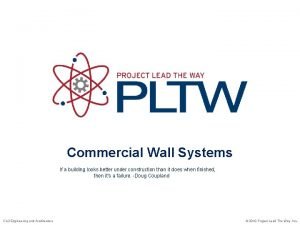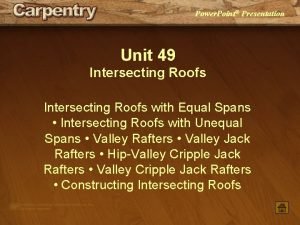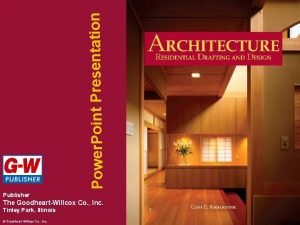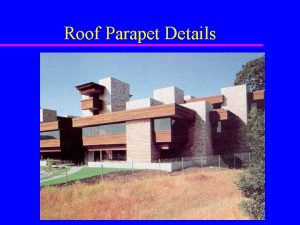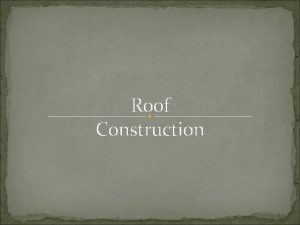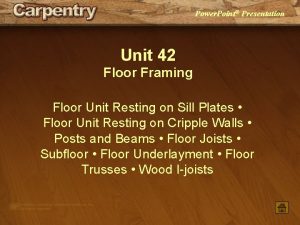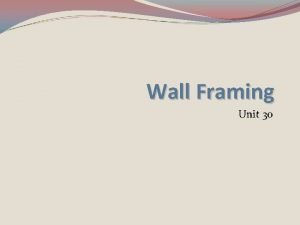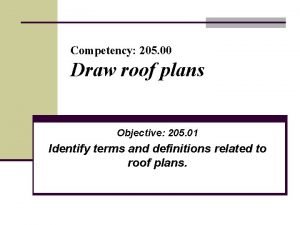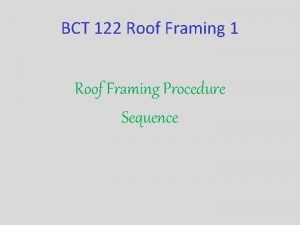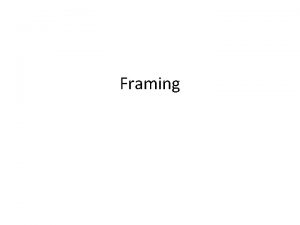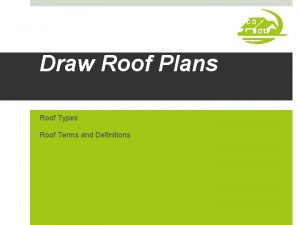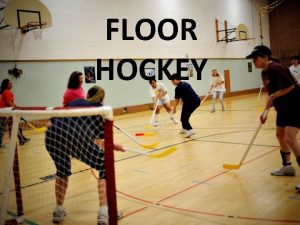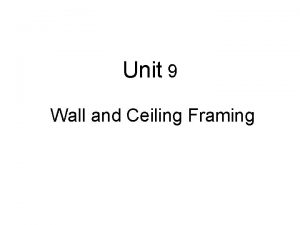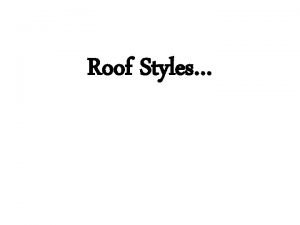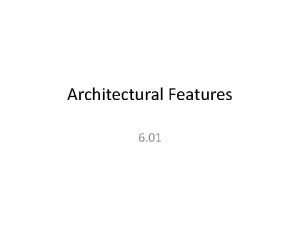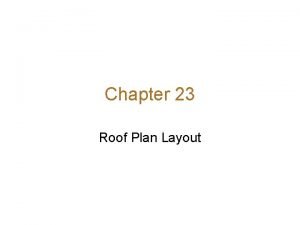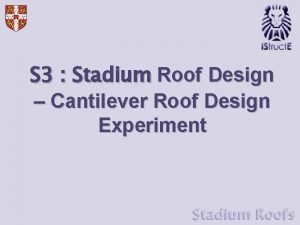Commercial Framing Systems Wall Floor Roof Systems Civil


















- Slides: 18

Commercial Framing Systems Wall, Floor, + Roof Systems Civil Engineering and Architecture

PURPOSE The purpose of structural framing is provide: • Strength – Holds the structure up (and holds it down) despite • Gravity (vertical) loads • Lateral (sideways) loads • Stability – Maintains the shape and minimizes movement

Cast-In-Place Systems (Most Common in High Rise Buildings) Hybrid Systems (Most Common in Low Rise Buildings) Structural Steel Systems

Commercial Floor Systems Courtesy Carolina Concrete Masonry Association

Precast Concrete Floor • • Formed and cast off-site Transported to the site Installed in the structure Typical Shapes Hollow Core Precast floor panels – Hollow core – T or Double T Precast slab

Cast-in-Place Concrete • Concrete floors are formed, reinforced, and cast in place. • Rebar is added to increase tensile strength of concrete.

Commercial Wall Systems • Load Bearing Walls – Low Rise – Cast-in-Place Concrete – Tilt-up Concrete – Concrete Masonry Units • Non-Load Bearing Walls – Curtain Walls

Load Bearing Walls Common Construction Materials • Low-rise commercial construction (four stories or less) may be similar to residential construction • Low-rise structures have a wide variety of building materials to choose from. Wood Precast Concrete Light Gauge Steel

Cast-in-Place Concrete • Concrete walls are formed, reinforced, and poured in place. • Concrete is reinforced with steel bars(rebar) to improve tensile and bending strength.

Tilt-up Concrete • Concrete wall sections are poured horizontally on site, tilted vertically, and then anchored. • Common in low-rise structures Courtesy TCA Courtesy Greg Thiel Courtesy TCA

Concrete Masonry Units (CMU) • Concrete is cast into hollow blocks that can be stacked and grouted to form walls. • CMU load bearing walls are reinforced with steel bars to improve tensile and bending strength.

Curtain Walls • Non-load bearing wall attached to the exterior of a building • Often composed of glass and metal • Provides visual appeal, daylight, and protection from the elements

Commercial Roof Shapes Roofs for small commercial buildings can be similar to residential pitched roof shapes. Shed Gable Hip Gable with Dormer Low-slope Gambrel Gable & Valley Hip & Valley Low-slope roofs (not completely flat) are common in large commercial construction.

Pitched Roof Framing (Low Rise Buildings) – Wood trusses or rafters – Light gauge steel trusses – Structural steel trusses – Open web steel joists (lower slopes) Courtesy Greg Thiel Open web steel joists on tilt -up concrete walls Courtesy Isle of Palms Rec Dept. Light gauge steel trusses on CMU load bearing wall

Low-Slope Roofs • Sometimes incorrectly called “flat” roofs • Provide small slope to provide roof drainage and to prevent ponding

Low-Slope Roof Materials • Built-up Roof (BUR) membranes – “Tar and Gravel” – Alternating layers of asphalt and reinforcing fabric – Aggregate surfacing Photograph provided with permission from the National Roofing Contractors Association (NRCA)

Low-Slope Roof Materials Single Ply membranes – Often referred to by chemical acronyms EPDM = ethylene propylene diene monomer – Fully adhered (glued), mechanically attached (screwed), or held down by ballast (e. g. , gravel) Photograph provided with permission from the National Roofing Contractors Association (NRCA) wikimedia Fully adhered EPDM roof system Ballasted EPDM roof system EPDM

Low-Slope Roof Materials Spray Polyurethane Foam (SPF) system • Two component system – Rigid closed cell spray foam insulation – Protective coating Photograph provided with permission from the National Roofing Contractors Association (NRCA)
 Skeleton steel framing system
Skeleton steel framing system Transverse framing system ship
Transverse framing system ship Chapter 10 floor framing
Chapter 10 floor framing Sheer strake in ship
Sheer strake in ship Commercial wall section
Commercial wall section Blind valley framing
Blind valley framing Roof framing around chimney
Roof framing around chimney Roof truss steel structure
Roof truss steel structure Concrete parapet wall
Concrete parapet wall Roof framing design
Roof framing design Butterfly truss details
Butterfly truss details Butterfly roof framing plan
Butterfly roof framing plan Squash block installation framing
Squash block installation framing Distance between studs
Distance between studs Commercial food service operation
Commercial food service operation Mansard roof plan view
Mansard roof plan view How to show roof slope on plans
How to show roof slope on plans Civil rights and civil liberties webquest
Civil rights and civil liberties webquest A sudden blow the great wings beating still
A sudden blow the great wings beating still
